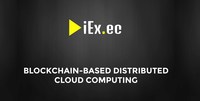Two prominent blockchain tech researchers, Michael Mainelli and Alistair Milne, have produced a working paper for the SWIFT Institute on the potential impact of blockchain technology on the securities industry.
Mainelli is the leader of the blockchain practice at London think tank Z/Yen, while Milne is an academic from the School of Business and Economics at Loughborough University.
The object of the paper, according to Mainelli and Milne, was to assess three research hypotheses regarding the potential impact of distributed ledger technology or blockchain on post-trade processing in global securities markets.
The three hypotheses are that blockchain settlement of securities will require a permissioned ledger, will be implemented in piecemeal developments, and will require substantial reengineering.
Here are the three hypotheses in Mainelli and Milne’s own words:
- “Any mutual distributed ledger settlement of securities purchases
(or other transactions in public financial markets) will need to use a
‘”permissioned’ ledger, in which only a limited number of approved network
participants can propose updates of the ledger and participate in
verification. This contrasts with permissionless mutual distributed ledgers
(of which the ‘Bitcoin Blockchain’ is the leading example) where anyone
can join the network and all have equal rights to propose updates to the
ledger and participate in verification.” - “The initial applications of mutual distributed ledger will be based
on piecemeal developments, in specific situations where there is no
established centralised security depository for recording ownership. A
coordinated and widespread change in operational processes across all
the major public markets for equities, bonds and other financial assets will
only be possible in the relatively far-off future, once technical feasibility is
established in more limited contexts.” - “At present current participants in the settlement cycle carry out a
bundled set of functions (verification of ownership, preparation for
exchange including associated borrowing of securities or cash, delivery of
value against payment) using historically developed arrangements (tiered
accounts, fungibility of securities ownership). Obtaining the benefits from
the application of mutual distributed ledger to securities settlement will
require a substantial reengineering of these arrangements in which the
positioning for settlement must be carried out prior to trade.”
The research methods used by the two authors included interviews and two focus group meetings held on 29 September 2015 and 25 November 2015 at the Z/Yen offices in London. The purposes of the early interviews and the first focus group
were to obtain information about the various proposals for using blockchain in securities settlement and to frame hypotheses to be examined. The purpose of the second focus group was to test the three hypotheses.
The participants in interviews and focus groups, or those that provided
comments on working paper drafts, represented global banks, insurance companies, major professional services firms, industry associations, market organizations, academic institutions, and government agencies.
From these research efforts, Mainelli and Milne find that the utilization of distributed ledgers in securities settlement could generate substantial reductions in both cost and risk, and that current interest in blockchain tech has established significant momentum.
However, the two researchers note that there is a risk of developing unrealistic expectations that the technology on its own will address the underlying need for co-ordination of business processes both within and between firms.
Mainelli and Milne stipulate:
Achieving all the potential benefits from mutual distributed ledgers will require board level buy-in to a substantial commitment of time and resource, and active regulatory support for process reform, with relatively little short term payoff.
The researchers also found that the only hypothesis that gained uniform acceptance from the research participants and informants was the first, which indicated that any distributed solution for settlement of securities purchases will need to use permissioned ledger technology.





